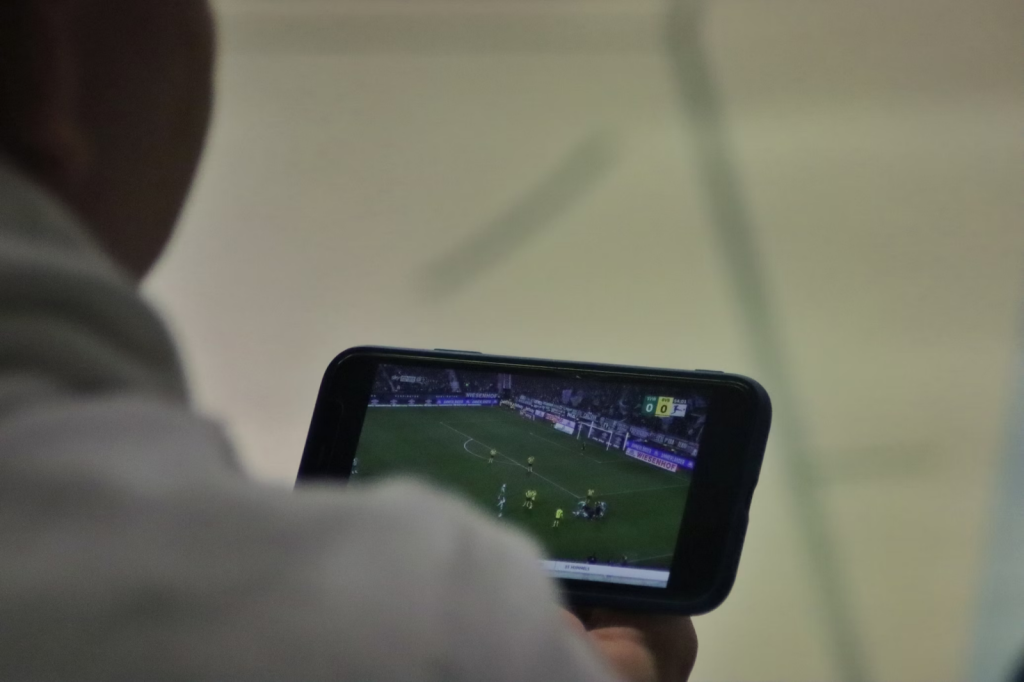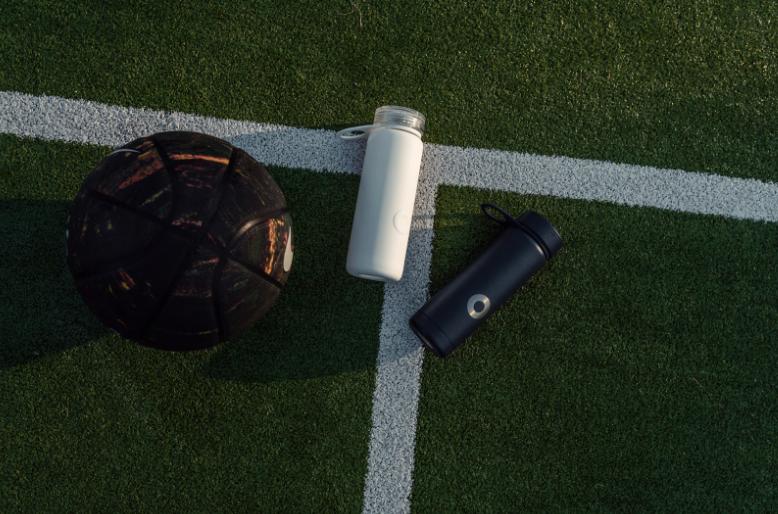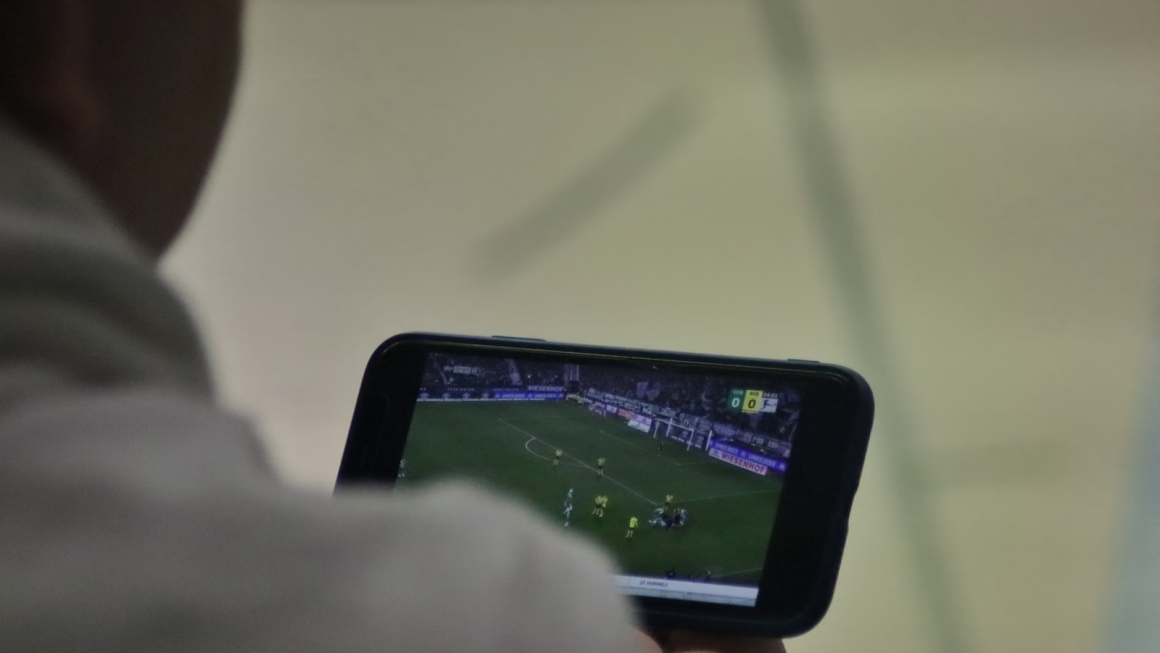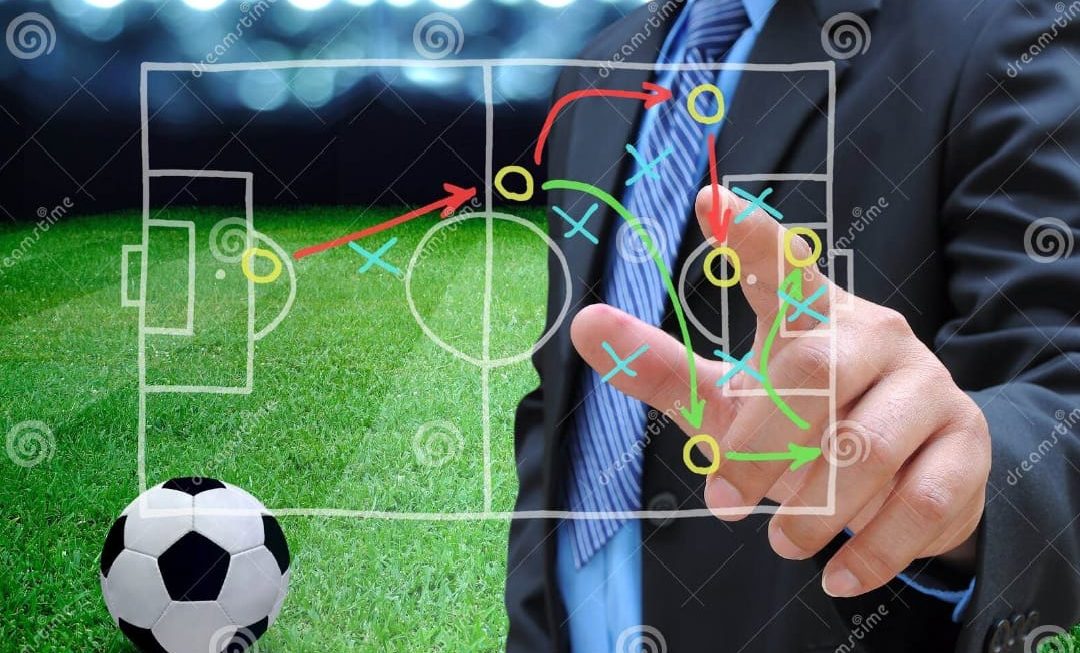How Technology Helps Monitor the Condition of Football Players
How Technology Helps Monitor the Condition of Football Players
Every second of the footballer’s life is monitored. The data is all here at once, with every breath they take, every sprint, jump and slide. This technology, and its development are now able to monitor and preserve the physical and mental endurance of the player. Apparel, AI and sensors give coaches and managers an overview of players’ vitals that provides them with a distinct view of the player’s success. The sports technology has grown so much that it analyzes and warns whether a player is about to do something injuring themselves. Coaches were often trusting their eyes. Now they trust data with life changing precision. For sports analysts and bettors, it is a game changer, since the player will get a picture of what is going on when someone burns out.
Wearable Devices on the Field
The new AI software in a GPS vest allows a player’s GPS vest to calculate how far a player is running, how fast they are moving, and even how fast they are breathing after a good tackle. The players are now equipped with new software, so fans and analysts do not have to miss important information, with the melbet online being fully analyzed in real time. When a player crosses a limit, whether that be heat or closing off, coaches and other staff can access immediate notifications.
By 2022, players tracked them 50 times a second. Injury decreased. The substitution efficiency increased. What about players who looked “tired”? Many of these muscle fatigue and overheating results were exhibited where the subjects were heavily used. You can decide the unobserved: whether the midfielder is exhausted with energy, and weak, merciless tech.

Biomechanical Motion Analysis
The rhythm of each footfall needs to be adjusted for optimum efficiency. Team teams use high speed cameras and motion sensors to construct 3D models of player’s movements, modeling details which a human’s eye would not observe. The technology of advanced technology enables teams to exploit an advantage of a handicap over others by putting the stakes on gambling. And this is what the second is.
The wise, the alert is warned. As a case in point, inconsistent running is a smooth and interesting indication of a very tightly wound hamstring.
The missed penalty kick that is not headline news can be avoided when the fault is put on predictive technology that corrects 2 degrees off kicks.
Joints that are overworked start to lose flexibility and move into these described ranges of movement, movement is then within that range, which is often a result of overworking and fatigue.
The best soccer teams plan 10 steps ahead and also plan for injuries. As it is, it is nothing alike and the world of soccer has never experienced something like this, but it welcomes the fan and the bettors who wish to paint mathematics to cover with every little twitch in sight.
Internal Load and Recovery
One can track the movement of a player. How about the biomechanics of the player? The player’s body provides feedback on tissue loads & recovery from training, balance of internal loads, external stressors (sleep, alcohol, hydration), and internal load response in terms of performance indicators. It is important to observe how the body responds to each of these movements. Daily monitoring of internal load more frequently can assist in controlling long term variations of day-to-day fluctuations that inhibit burnout and promote more rapid recovery. In elite football, recovery correlates with spending more time on the field of play and being part of influencing higher level decision making.
Blood and Hydration Monitoring
Your blood knows a lot about you. Pain-free microneedle patches capable of drawing fluid are now available for micro-sampling within training. These tests show levels of lactate, oxygen, iron and red blood cell count amongst others. If anything abnormal is detected in the results, prompt action is taken. For example, creatine kinase elevation can alarm about possible muscle damage long before any soreness.
Dehydration can account for over 60% of injury risk . Some clubs measure urine specific gravity every day while other clubs implement the use of smart water bottles that can sync with sensors placed on the athlete’s body. In professional sports these tiny details, if not captured, could cost the club and bookmakers’ millions.

Heart Rate Variability (HRV) Tools
HRV is the “smoke detector” of the autonomic nervous system. Recovery, when it does fall, is never complete even when a player appears completely fine. These days clubs measure HRV daily through the use of finger sensors, chest straps or bright rings. This information collected is useful in making dynamic adjustments to training. This is how teams use HRV data to shield athletes from superfluous training, while at the same time keeping an eye on risk of athletic investment.
Training preparedness: Low HRV is given in the morning, and a lighter day or total rest is needed.
Injury risk flagging: An acute decline in HRV following travel? That player is high-risk and may be resting.
Mental strain marker: HRV responds to anxiety, sleep, and stress well before physical changes.
Personal baselines: Coaching is based on individual metrics, not group means.
The “coaches” that would push athletes without regard for their capacities or individual requirements are outdated. The recovery process as an athlete is determined by numbers, and
these numbers are strong.
Mental Wellness Tracking
Mental anguish is a ‘silent killer’ in football. Clubs monitor changes in mood, sleep, anxiety and emotional fatigue because even elite performers will not execute well if the minds are not conditioned. Daily check-ins, use of psychology apps, voice analysis – these things are no longer “the exception”, not because they don’t want to be seen as the exception, but because they have real results. Stress impacts how a player makes decisions. This is tech’s ability to track mental performance in the same way that it does physical performance:
| Technology Used | What It Tracks | Real Match Impact Example |
| Mood check-in apps | Sleep patterns, stress, motivation | PSG adjusted Messi’s training after mood alerts |
| Voice tone AI | Fatigue, anxiety via voice recordings | Detected burnout signs in top EPL players |
| Smart questionnaires | Cognitive strain and mental clarity | Used before key matches to assess mental sharpness |
Heat and Environmental Stress Sensors
For FC Seville defenders, during training, runs for 12 kilometers are expected that could really be lethal on a town sunny day. This isn’t hyperbole. Water loss can exceed 3 liters during a match. The heat sensors contained in the GPS vests alert coaches when a player’s core temperature has increased. Which matches will take place in Qatar? At all times when hot stress was recorded during the match, substitutes were made in a thermal manner rather than an exhausting manner.
Teams can now also measure altitude, humidity and even air quality. Some teams adjust their warm-up routines according to wind speed. This is not the stuff of sci-fi; it is pedestrian science. It keeps the lungs from being damaged, protects against collapsing, helps in over-heating and forecast declines in performance that in fact changes the match.
AI-Powered Injury Forecasting
Clubs lose millions through injuries and punters lose even more. Instead, AI looks through years of data, like game time, accelerations, recovery windows, sleep cycles and processes all of this to identify risk well before it could be identified on field. Soft tissue injuries can now be predicted with analyses at an accuracy of up to 85%. No waiting and no guessing.
These models are used on a daily basis for teams like AC Milan. They incorporate wearables, blood work, and Center of Mass GPS data to build individual risk profiles. AI is blind to both celebrities and novices. In pushing for “bench him, preemptive action is taken because AI is emotionless and almost always right. It has changed how squads rotate and prepare for match day. And it is changing betting.
A New Era of Player Care Through Technology
Players have ceased being just athletes. Every sprint, each player, every drop of sweat, every sprint, every thought. Not to dominate, but to protect, to prolong a competitive existence and to win. That’s football caring.
Wearable Devices on the Field
The new AI software in a GPS vest allows a player’s GPS vest to calculate how far a player is running, how fast they are moving, and even how fast they are breathing after a good tackle. The players are now equipped with new software, so fans and analysts do not have to miss important information, with the melbet online being fully analyzed in real time. When a player crosses a limit, whether that be heat or closing off, coaches and other staff can access immediate notifications.
By 2022, players tracked them 50 times a second. Injury decreased. The substitution efficiency increased. What about players who looked “tired”? Many of these muscle fatigue and overheating results were exhibited where the subjects were heavily used. You can decide the unobserved: whether the midfielder is exhausted with energy, and weak, merciless tech.
Biomechanical Motion Analysis
The rhythm of each footfall needs to be adjusted for optimum efficiency. Team teams use high speed cameras and motion sensors to construct 3D models of player’s movements, modeling details which a human’s eye would not observe. The technology of advanced technology enables teams to exploit an advantage of a handicap over others by putting the stakes on gambling. And this is what the second is.
The wise, the alert is warned. As a case in point, inconsistent running is a smooth and interesting indication of a very tightly wound hamstring.
The missed penalty kick that is not headline news can be avoided when the fault is put on predictive technology that corrects 2 degrees off kicks.
Joints that are overworked start to lose flexibility and move into these described ranges of movement, movement is then within that range, which is often a result of overworking and fatigue.
The best soccer teams plan 10 steps ahead and also plan for injuries. As it is, it is nothing alike and the world of soccer has never experienced something like this, but it welcomes the fan and the bettors who wish to paint mathematics to cover with every little twitch in sight.
Internal Load and Recovery
One can track the movement of a player. How about the biomechanics of the player? The player’s body provides feedback on tissue loads & recovery from training, balance of internal loads, external stressors (sleep, alcohol, hydration), and internal load response in terms of performance indicators. It is important to observe how the body responds to each of these movements. Daily monitoring of internal load more frequently can assist in controlling long term variations of day-to-day fluctuations that inhibit burnout and promote more rapid recovery. In elite football, recovery correlates with spending more time on the field of play and being part of influencing higher level decision making.
Blood and Hydration Monitoring
Your blood knows a lot about you. Pain-free microneedle patches capable of drawing fluid are now available for micro-sampling within training. These tests show levels of lactate, oxygen, iron and red blood cell count amongst others. If anything abnormal is detected in the results, prompt action is taken. For example, creatine kinase elevation can alarm about possible muscle damage long before any soreness.
Dehydration can account for over 60% of injury risk . Some clubs measure urine specific gravity every day while other clubs implement the use of smart water bottles that can sync with sensors placed on the athlete’s body. In professional sports these tiny details, if not captured, could cost the club and bookmakers’ millions.
Heart Rate Variability (HRV) Tools
HRV is the “smoke detector” of the autonomic nervous system. Recovery, when it does fall, is never complete even when a player appears completely fine. These days clubs measure HRV daily through the use of finger sensors, chest straps or bright rings. This information collected is useful in making dynamic adjustments to training. This is how teams use HRV data to shield athletes from superfluous training, while at the same time keeping an eye on risk of athletic investment.
Training preparedness: Low HRV is given in the morning, and a lighter day or total rest is needed.
Injury risk flagging: An acute decline in HRV following travel? That player is high-risk and may be resting.
Mental strain marker: HRV responds to anxiety, sleep, and stress well before physical changes.
Personal baselines: Coaching is based on individual metrics, not group means.
The “coaches” that would push athletes without regard for their capacities or individual requirements are outdated. The recovery process as an athlete is determined by numbers, and
these numbers are strong.
Mental Wellness Tracking
Mental anguish is a ‘silent killer’ in football. Clubs monitor changes in mood, sleep, anxiety and emotional fatigue because even elite performers will not execute well if the minds are not conditioned. Daily check-ins, use of psychology apps, voice analysis – these things are no longer “the exception”, not because they don’t want to be seen as the exception, but because they have real results. Stress impacts how a player makes decisions. This is tech’s ability to track mental performance in the same way that it does physical performance:
| Technology Used | What It Tracks | Real Match Impact Example |
| Mood check-in apps | Sleep patterns, stress, motivation | PSG adjusted Messi’s training after mood alerts |
| Voice tone AI | Fatigue, anxiety via voice recordings | Detected burnout signs in top EPL players |
| Smart questionnaires | Cognitive strain and mental clarity | Used before key matches to assess mental sharpness |
Heat and Environmental Stress Sensors
For FC Seville defenders, during training, runs for 12 kilometers are expected that could really be lethal on a town sunny day. This isn’t hyperbole. Water loss can exceed 3 liters during a match. The heat sensors contained in the GPS vests alert coaches when a player’s core temperature has increased. Which matches will take place in Qatar? At all times when hot stress was recorded during the match, substitutes were made in a thermal manner rather than an exhausting manner.
Teams can now also measure altitude, humidity and even air quality. Some teams adjust their warm-up routines according to wind speed. This is not the stuff of sci-fi; it is pedestrian science. It keeps the lungs from being damaged, protects against collapsing, helps in over-heating and forecast declines in performance that in fact changes the match.
AI-Powered Injury Forecasting
Clubs lose millions through injuries and punters lose even more. Instead, AI looks through years of data, like game time, accelerations, recovery windows, sleep cycles and processes all of this to identify risk well before it could be identified on field. Soft tissue injuries can now be predicted with analyses at an accuracy of up to 85%. No waiting and no guessing.
These models are used on a daily basis for teams like AC Milan. They incorporate wearables, blood work, and Center of Mass GPS data to build individual risk profiles. AI is blind to both celebrities and novices. In pushing for “bench him, preemptive action is taken because AI is emotionless and almost always right. It has changed how squads rotate and prepare for match day. And it is changing betting.
A New Era of Player Care Through Technology
Players have ceased being just athletes. Every sprint, each player, every drop of sweat, every sprint, every thought. Not to dominate, but to protect, to prolong a competitive existence and to win. That’s football caring.




